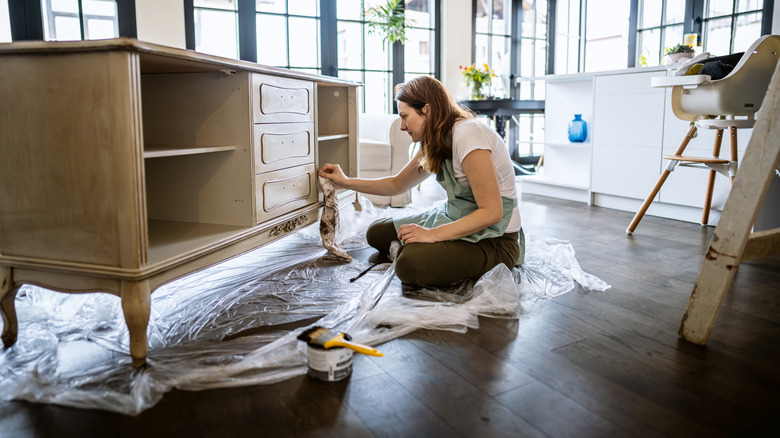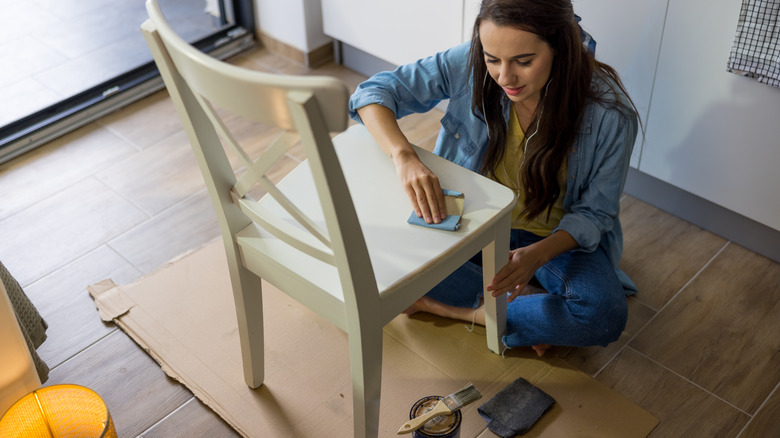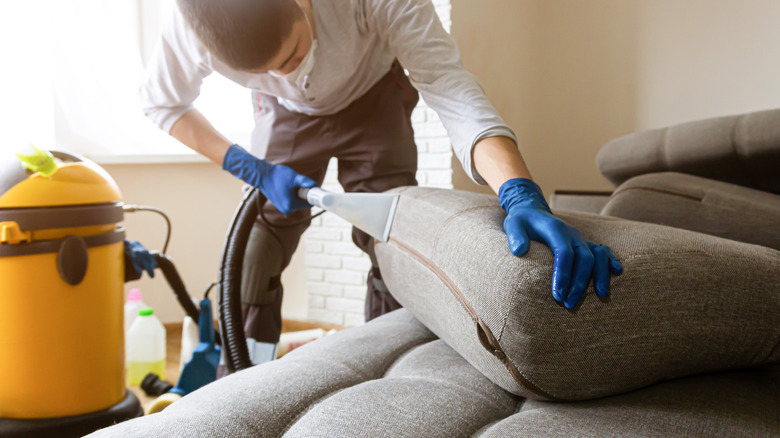How You Can Repair Water-Damaged Furniture
Unfortunately, most people experience water damage at one time or another, whether from burst pipes, a leak in the roof, or hazardous weather. When water unexpectedly floods our homes, our furniture often takes the brunt of it. Regardless of if your furniture is wood or upholstery, there is a way to salvage it and fix it right up. Wood tends to be a more straightforward fix than fabric, needing to be dried and stripped before cleaning and resealing it. On the other hand, while upholstery also needs to be thoroughly dried and cleaned, it can be more challenging to work with cloth materials.
Time is of the essence when saving furniture from water damage. The longer an item sits in water, the less likely you are to be able to restore it. Discoloration, musty odors, and warping are critical telltale signs that water damage has occurred, but unless wood continues to be soft to the touch and warped after drying out, it can usually be fixed. For upholstery, anything that has been sitting in water for more than a few hours may need to be disposed of. Ultimately, you'll need to decide if the item is worth the hassle and cost to properly clean and dry it. Either way, there are home remedies and solutions to repairing water-damaged furniture and returning it to its former glory.
Repairing wood furniture
To begin repairing wood furniture that has been damaged by water, you'll first want to soak up and remove as much moisture as possible and allow the wood to dry completely over one to two days. Opening windows, running fans, using dehumidifiers, and even setting it out in the sun can aid the drying process. Avoid placing the wood out in weather that is too hot or cold though, as high temperatures pose the risk of further cracking, and frigid air encourages mold growth. Once dried, if any wood is still noticeably soft or warped, it is likely unsalvageable. Remove overly damaged wood if possible, or apply a wood preservative to add a layer of protection in those areas. Next, strip the wood of its paint or top finishes and treat any stains and molding spots.
Treating water stains can be done with a number of different home remedies, such as scrubbing with a baking soda and toothpaste mixture, a 1:6 ratio of oxalic acid and water, and a one to two-hour saturation in mayonnaise or petroleum jelly. For mold patches, using a more robust peroxide solution is advised. With staining and mold growth remedied, begin resealing any cracks and gaps and use veneer glue to reassemble any broken pieces. Re-sand the wood before reapplying any finishes, such as paint and stains, and consider adding a varnish as a top coat for an extra layer of protection.
Restoring upholstered furniture
Repairing water-damaged upholstered furniture can be more challenging than wood furniture. Fabric is much more porous than wood and can hold onto harmful bacteria and contaminants if not properly cleaned. Whether or not you can save upholstered furniture from water damage will largely depend on how long it has been wet and the type of water it has been exposed to. Water from pipe or appliance leaks is much safer than flooding that comes from a river or sewage. If the latter is your situation, the furniture should be disposed of to avoid serious health hazards.
Begin salvaging your furniture by beginning with a pressure wash. This will help remove any bacteria and give you a clean slate to work with. Once cleaned up, the furniture must be allowed to dry completely. You'll want to use strong fans and industrial-strength dehumidifiers to dry the fabric as quickly and thoroughly as possible. When dry, you can help disinfect the upholstery and remove lingering odors by sprinkling baking soda and vacuuming it up after it has been allowed to sit for at least an hour. If you are someone who is handy in carpentry, it would be beneficial to remove the fabric from the furniture's frame and reupholster it when it has been cleaned and dried correctly. Professionals can also be called to handle severe water damage to upholstery, and given that it can get expensive, you should check homeowners insurance to see if you're eligible for a claim.


